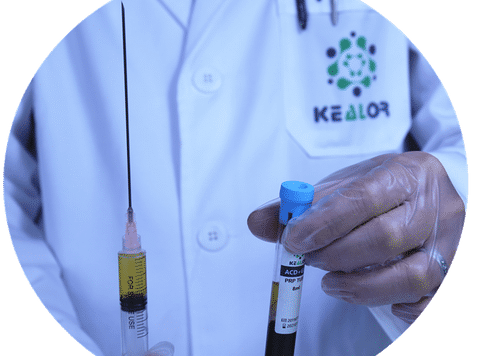Platelet Rich Plasma PRP
Blood is composed of red blood cells, white blood cells, plasma and platelets. If a vial of blood is placed on a table, the blood will eventually stratify into three different layers, with the heaviest components sinking to the bottom and the lightest components rising to the top. Eventually the three different layers will become visible; red blood cells (RBCs) at the bottom, white blood cells and platelets in a thin layer above the RBCs, and finally plasma lacking platelets at the top.
Centrifugation accelerates this innate sedimentation process and allows the practitioner to separate and reinject platelets in a timely manner. Under centrifugation, the particles in suspension are subjected to radial forces that move them away from the axis of rotation. The denser particles move at a faster rate and are separated from the less dense and smaller particles.
Optimal PRP Centrifugation Rate
Calculating the exact speed, force and length of time required to delaminate blood requires an in-depth understanding of the physics. Many factors affect how the centrifugation process unfolds, including the width, length and weight of the PRP kit, as well as the speed and force exerted by the centrifuge. In addition, the centrifugal force increases with distance from the axis of rotation. Thus, given the same velocity, a larger centrifuge will exert a greater force compared to a smaller centrifuge.
Relative centrifugal force is an expression of the g-force; the gravitational force of the earth. When calculating the g-force, remember that the g-force acting on a particle is exponentially related to the speed of rotation. This exponent is expressed in revolutions per minute (rpm). The exponent is particularly important when considering centrifugal velocity; for example, doubling the velocity doubles the force.
Commercially available centrifuges are designed to maximize the precipitation and separation of platelets when used with their respective PRP kits. The differences in weight and size of commercially available PRP kits require a different centrifuge for each kit. Manufacturers have established protocols to optimize the precipitation process based on the exact size of the kit.
Centrifugation and temperature
The most important factors to consider when centrifuging are time, speed and temperature, but none of the commercially available PRP centrifuges appear to control temperature. Is this industry oversight leading to different results for orthopedic biologics?
Temperature is an essential variable to consider when working with biological materials. High speeds create friction and heat the sample during centrifugation. If centrifugation occurs outside of a vacuum, controlling temperature becomes even more important. Centrifugation outside of a vacuum creates additional resistance and elevated temperatures. Research biologists traditionally cool the centrifuge to counteract the friction-induced temperature increase.
If the sample is heated during centrifugation, platelets may activate prematurely. In addition, the heat may damage the platelets and reduce viability. Cooling the centrifuge slows down the biological process and helps maintain platelet viability. This well-known biological phenomenon has been recognized by researchers as being associated with enhanced platelet activation and alpha particle release, but rarely impairs platelet viability during centrifugation. A single-author review in the literature suggests cooling the centrifuge to 12-16 degrees C (53.6-60.8 degrees F) to maintain platelet viability.
More research is needed to better understand the role of temperature in PRP preparation. Replication results depend on precise control variables when using biological materials, and conflicting results in the field of orthobiology may be related to different sample temperatures. The optimal PRP centrifuge and centrifugation protocol depends on the exact specifications of the PRP reagent kit. The ideal centrifugation rate and duration are calculated based on the mass and size of the PRP kit. Researchers and clinicians will benefit from experiments designed to assess the temperature increase associated with platelet viability during centrifugation.








